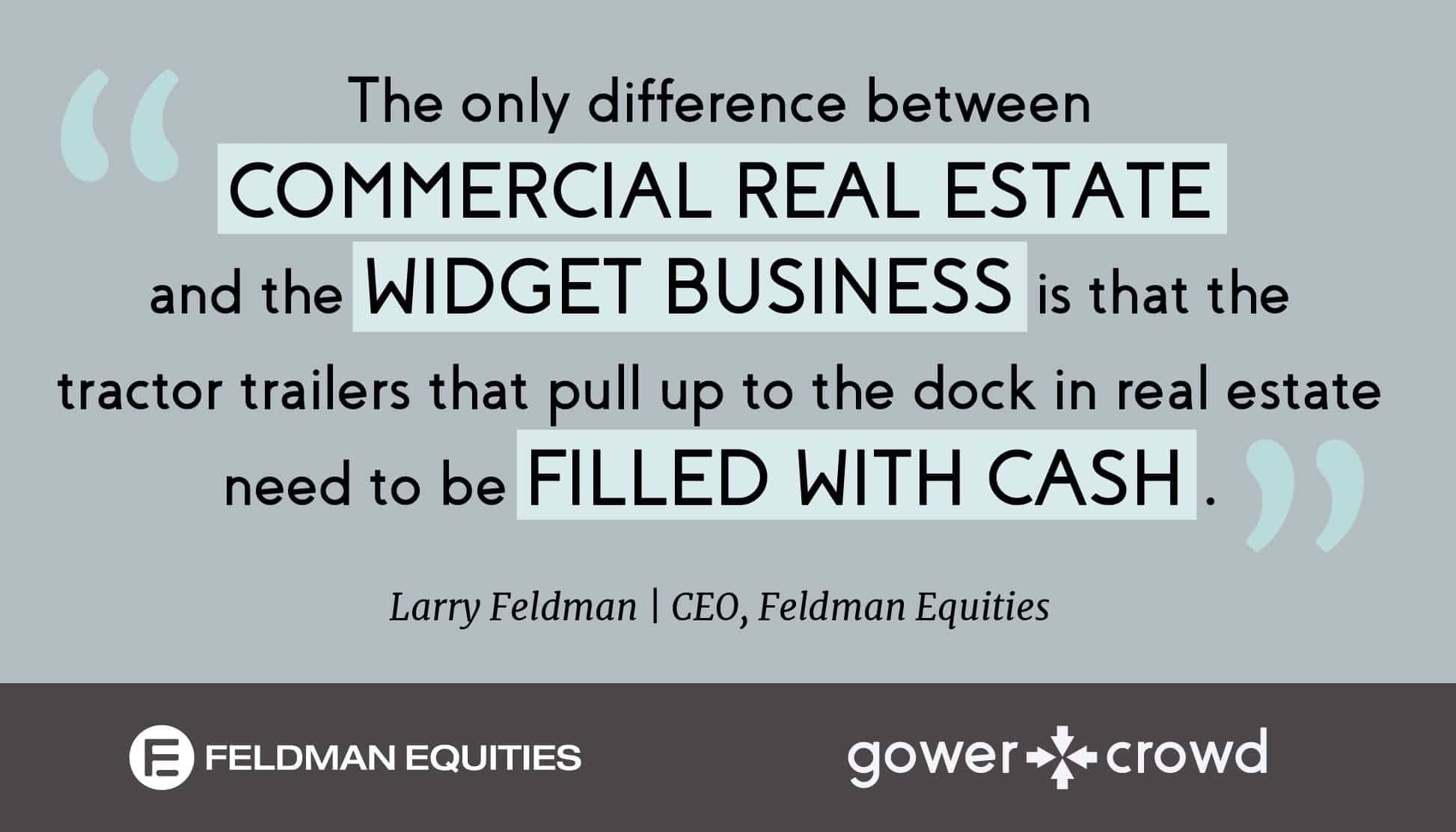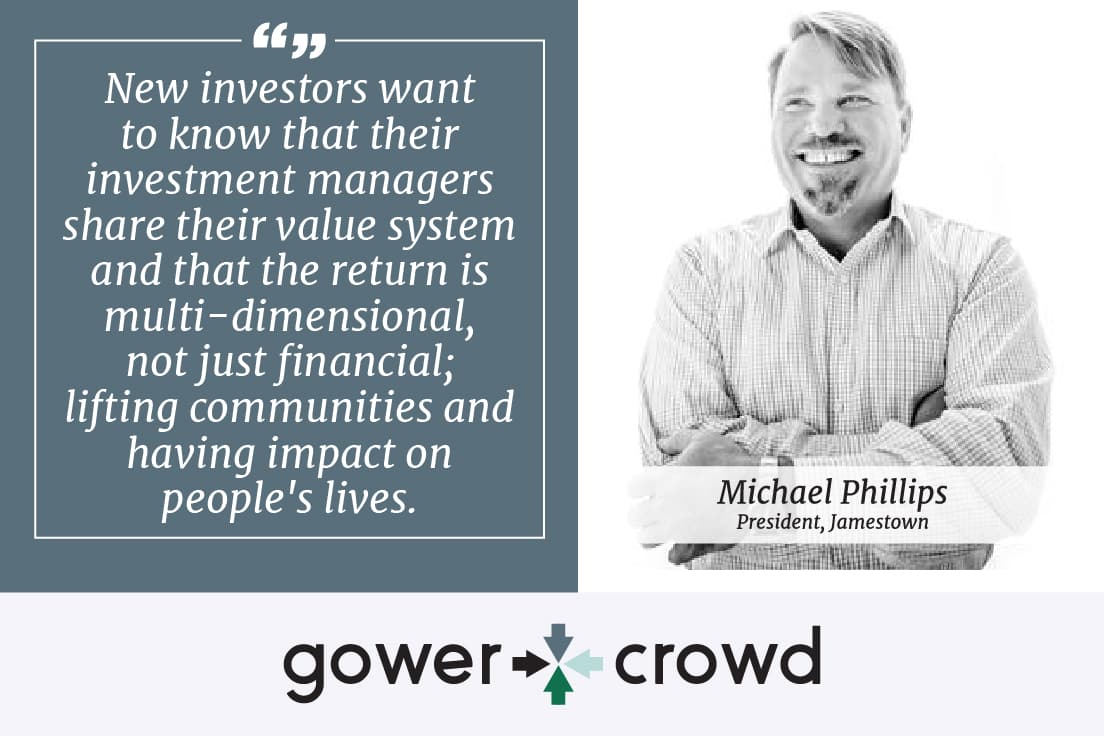How to Finance a Real Estate Development Project
By Adam Gower Ph.D.
so, you want to get into real estate development. You’ve got an idea about what sector you want to jump into, who you might work with, and how it will add to your investment portfolio. Before you can get started, you need to know where the money is coming from.
Real estate development almost always requires outside financing. It’s not practical and may not be profitable to develop only the properties you can afford to purchase on your own, so you’ll need to know where you’re going to get extra money to work with for property purchase, planning, construction, and related expenses.
Where does the money come from? You will need both equity investments from outside investors and debt financing. There are a few options for both of these choices.
Related: Investing in Debt vs Equity
Crowdfunding For Real Estate Development
Crowdfunding is a brand-new opportunity in real estate investment. It started when Congress passed the 2012 JOBS Act that allowed developers to raise money online using digital marketing and social media (previously prohibited) and has experienced a lot of grow since then.
"Early adopters have found success with crowdfunding, and established investment companies are increasingly investing more in this opportunity."
"For real estate developers, it’s a great source of capital that no longer requires a direct connection with potential investors as the laws previously required. You can source your capital from numerous smaller investors through an online platform or directly through your own website and social media outreach."
The challenge is that these platforms cannot guarantee that you will raise all the capital you need and, perhaps more importantly, their selection criteria tend to fit very narrow parameters which means you may not qualify – even if you have experience and a good project to offer.
Crowdfunding is also complicated in part because the regulations surrounding its application in real estate investment are different depending on who the target investors are. Some applications are fully supported, such as sourcing income from accredited or sophisticated investors – meaning people with high net worth – but sourcing funding from non-accredited investors comes with multiple additional layers of regulatory protections.
"However, real estate developers can successfully navigate these hurdles and reach non-accredited investors if they wish by using ‘Funding Portals’ like SmallChange or by launching Regulation A+ offerings, otherwise known as mini-IPOs."

Equity Financing for Real Estate
Equity crowdfunding is where many people contribute towards the purchase of an asset typically through an entity that is set up solely for the purpose of owning the asset, a single purpose entity or SPE. In exchange for their financial contributions, investors own shares in the SPE which in turn owns the asset. The developer will also own shares in the SPE and will have an operating agreement of some sort, that defines their rights and responsibilities.
Their primary role will be to manage the day to day execution of the business plan for the asset, be it ground up development or adding value to an existing property etc. Investors will also have an agreement with the SPE that defines their rights and responsibilities, and that describes how their investment will be returned to them and with what share of the profits.
These payments to investors are often in the form of a preferred return of some sort, measured in percentage terms and most commonly an 8% return (40% of all real estate projects). This income comes from net operating income from rents.
Investors also typically share a percentage of the profits that come with the sale of the asset.
In general, equity investment is considered riskier for the investor than debt funding. Investors are passively involved in the investment with no real management responsibilities. They will carry part of the risk of failure, as the value of their equity stake changes with the asset value.
"There are many ways a developer can seek out equity funding that will vary according to the financial needs of the project as well as by what they believe their investors will be looking for. Two commonly used types of equity include preferred and common equity."
Preferred Equity
- Preferred equity investors are given income ahead of common equity investors. The interest paid on preferred equity may be slightly lower than common equity because the risk is lower because preferred equity investors get first priority during payouts.
- The tradeoff for having a priority claim over distributions is that preferred equity investors receive only a fixed rate of return and do not share in larger payments that may come from the sale of the property.
Common Equity
- Payments to investors who choose common equity investments are made last. Mortgage payments and payments to preferred investors come first. While this makes it a riskier investment, there is a potential for higher return on common equity deals as investors also enjoy a share in the profits of the project.
Debt Financing For Real Estate
As opposed to equity funding, debt crowdfunding gives the developer capital to use without sacrificing equity in the project. Because loans are typically used for real estate development, this is a familiar model in the new crowdfunding industry, which helps funding become available for a larger number of developers from a larger number of investors.
Debt crowdfunding can happen in one of two ways:
Related: Returns From Investing in Debt
Syndicated Debt (AKA Hard Money Loans)
- In debt syndications, the developer (borrower) receives a loan from a lender who then sells portions of the loan to a group of private investors. The lender researches borrowers’ projects thoroughly and performs all due diligence before issuing any loans. They often charge fees which can be passed on to investors or developers depending on the business model of the lender.
- This kind of lending is sometimes known as ‘hard money’ lending as it tends to come with significantly higher interest rates than a bank would offer. On the plus side, hard money lenders will lend to borrowers who may not otherwise be able to get a bank loan either because of credit issues or because they need the loan in a much shorter time than a bank can process.
Direct Debt Crowdfunding
- Online crowdfunding platforms for real estate may offer direct loans to developers and compete, in some circumstances, directly with hard money lenders. This option takes the hard money model digitizes it, putting it online and automating the entire process. Borrowers ‘list’ their properties on the crowdfunding site once the site has approved their project and connects directly with individual investors.
- In some cases the crowdfunding platform will front the money needed by the developer and then ‘back-fill’ that capital with money from the crowd. This provides higher certainty to borrowers/developers. In other cases, a borrower will list their project on the crowdfunding platform and hope that enough investors provide the capital they need. This is why it is prudent for all developers to have their own digital presence to support any online capital raises, whether conducted on a crowdfunding platform or directly.
Both debt options will give developers the same results. The only difference will be the exact source of the loan and what it takes to apply for it.
All debt crowdfunding options are secured by the property being developed. Typically, investors are repaid within two years or less and receive a share of accumulated interest paid by the borrower. Investors may prefer this option over equity crowdfunding because mortgage payments are always made before dividends are made to equity investors.
Get access to our FREE weekly newsletter exclusively covering the latest updates from the real estate crowdfunding world
Financing Real Estate with Loans
Loans for real estate development can be taken from banks, wealthy individual investors, or investment companies. This includes syndicated loans, which we briefly mentioned above.
To apply for financing from any source, you need to be well prepared. This is the basic process to follow:
Demonstrate your credibility
To secure funding, you must demonstrate that you’re able to accomplish the goals of your project. For this, you’ll likely need relevant development experience and a track record of successful development projects.
Alternatively, you can team up with a partner who already has a strong track record of success. Without a good record of your own or a partner with a good record, you’re not likely to secure a large loan from any source. However, you may be able to get a small loan for an individual rental property or small commercial property.
Plan for multiple locations
Loans may take some time to be processed, which could result in the property you wanted being sold to another buyer. Because of this, it’s wise to come up with a few options for where you are going to source your debt. In order to get a loan, you’ll need to show that you have a plan in place that will likely result in a good return on investment (ROI).
Plan for working with multiple lenders, not just your preferred lender, just you in case you have to come up with a backup plan should things take longer than you expect.
Prepare development cost estimates
Do your research and create a detailed cost analysis of the projects you’re planning for. Make sure the sale price is comparable to others sold in the local area.
Also, prepare estimates for all the costs associated with the development of the property. Look at the material, labor, and overhead costs along with fees for permits and associated costs. Once you have your estimates, add a 10 – 15% buffer on top, commonly known as the ‘contingency’ line item.
Create a pitch
Be ready to present your project to lenders by first providing the financial highlights in a succinct way, and then being prepared to drill down on the details. Be sure you can answer every question a lender may ask, and be ready to get more information to them if and when they ask.
Bank lending is the most traditional form of funding for debt and as the industry is highly regulated be prepared to provide extensive documentation to substantiate your background and financial history.
How to Keep Your Project Costs Low
No matter where your funding comes from, your profits will be higher if you can keep your costs lower. Although you need to build contingencies into your estimates, it’s better if you never don’t have to tap into that buffer at any point.
Keeping your development costs low will result in a better profit for you and any potential equity investors in the project. Even if you don’t reach your income goals, lowering the overall cost of a project will help you achieve your objectives.
It’s also generally easier to secure funding for lower cost projects as a percentage of projected value upon completion, than for relatively higher cost projects. Banks will provide debt based on the lower of two numbers (simply stated), one, a percentage of your total projected cost, and two, a percentage of total projected value upon completion.
"Unless you have a lot of experience with high-value real estate projects, you’re not likely to get high leverage for your project, and neither would you want it."
The repayment of debt is the single hardest financial challenge you have to face during a development project. Banks are highly regulated and consequently are generally an unforgiving lender should things go wrong.
They will take the property from you in a foreclosure action if you fail to pay them on time. Having a disciplined approach to development can help you to build successful projects.
What can you do to keep costs lower? Focus on a few things in particular.
Location
Location plays an enormous part in determining the cost of buildings, land, labor, and supplies. Play to your strengths and find locations with more favorable costs. You’re not limited to just developing your local area. Broaden your horizons to look for potential projects all around the US so you can find something in a location with a more favorable cost structure.
"For example, real estate inside a first-tier city will cost significantly more than real estate in a secondary or tertiary city. Land prices increase the more they are in demand, such as when they are in a crowded city or nearby a desirable location like a beach or a significant landmark. The same exact project can have a different cost depending entirely on the location of the property."
The other thing to be away of with location is the change in labor costs, material costs, overhead expenses, and similar costs. Due to varied market standards, differences in regulations, and availability of certain inputs, your costs will never be the same in two entirely different locations.
Don’t apply cost data from different locations to your estimates. Know the market standard prices for all the costs of your project so you can be sure to keep to your original budget.

Vendors, Contractors, and Sub-Contractors
Working with the right vendors and sub-contractors (subs) makes a big difference in cutting costs. Some subs may have higher pricing but will show up when they say they will. Others might charge less but fail to perform, costing more down the line as you fix mistakes and your project gets delayed.
Look into the history and capabilities of each sub-contractor you plan to work with before signing any contracts. Due diligence is important if you want to work with people who can get the job done right.
Don’t skimp out on the cost of hiring essential experts. Unless you understand every building regulation in the area you’re developing, you need expert advice from architects, engineers, and similar professionals to make sure you’re doing things in the right way from the start.
Fixing these types of errors is costly and time-consuming, and there may be fines attached for non-compliance or negligence.
"For contractors, you need to do your research up front. Look for contractors that are licensed, insured, and who have a track record of getting work done on time. Be on the lookout for shoddy jobs in their past and see how many satisfied customers they have for similar projects."
Ask about maximum price guarantees and get quotes from multiple trustworthy contractors. If possible, speak to other real estate developers in the area to ask about their costs for similar projects.
Size of project
Smaller projects are generally lower cost projects, unless you are planning an ultra-luxury development with a very high cost per foot to develop.
"Reducing a project’s size may not be your preferred option because zoning regulations may permit you to build larger scale. However, the highest and best use of a piece of land or redevelopment project may not always be to maximize the scale of the project simply because local regulations permit it. "
Take your time to evaluate the local market, demand for the kind of building you are developing, and be sure to scale your project to meet that demand. You may be better off building a smaller project that ends up being fully occupied, than a larger project that has a high vacancy rate.
Timeline
The longer a property is in development, the higher the carrying costs will be. You can’t rush a project to completion, but you should create a realistic timeline and follow-up consistently to make sure things are going on as scheduled.
Carrying costs include interest on any loans taken out on the project, property taxes, insurance, utilities, and other related operating expenses, plus, importantly, the cost of paying your investors returns on their investment.
You can’t do much to reduce your carrying costs, but you can reduce the amount of time it takes to get the project completed. To reduce your carrying costs, you can focus on buildings or properties that don’t need as much work, only need renovations, and that have ongoing income while you complete your business plan.
This is why value add apartment buildings are so popular; rents from occupied units offset losses from vacancies while units are being renovated. Any full construction projects will take longer and will include higher carrying costs over the full timeline, plus have no ongoing operating income until leased up.
Pre-Development
Throughout the pre-development process, you need to plan every step of the project as thoroughly as possible. If you don’t budget for it, that doesn’t mean it won’t cost anything.
Failing to budget for something or not budgeting the right cost in your development plan can result in substantially higher costs as you scramble to arrange for something unexpected. every step of the project as thoroughly as possible. If you don’t budget for it, that doesn’t mean it won’t cost anything.
Know what costs to put in your estimates, what to plan for in development, and what to expect on site.
Think about things that could realistically happen, not just your best-case scenario. If something goes wrong, you should be ready for it and have a plan of action, or else it might heavily affect your costs – hence the need for a contingency line item in your original budgeting to cover these kinds of unexpected cost overruns.
What is an Expected IRR for a Real Estate Development Project?
Calculating the Internal Rate of Return (IRR) for real estate development projects is not a straightforward process and is commonly misunderstood in the industry. Any changes to the variables can result in vastly different results. You need to get your calculations as close to correct as possible to make more informed investment decisions.
Related: Internal Rate of Return Part I and Part II
There are a few different ways to get an IRR result for a real estate development project. Use a tool, a pre-set calculator, or follow a formula manually – though, of course, the best way to do it is by using Excel.
In order to demonstrate how complicated this calculation is, however, here’s how it looks if you attempt to conduct a manual calculation using this formula:
IRR=NPV=t=1∑T Ct/(1+r)t -C0
Ct = Net cash inflow during period t
C0 = total initial investment costs
R = discount rate
t = time periods
Manual calculations are difficult and require a lot of trial and error. If you have to do it for one simple property, you may be able to. But, it’s very time consuming and doesn’t always give accurate results.
You’ll likely only find this formula in academic settings and Excel is by far the most commonly used tool for calculating the IRR.
That said, even Excel has its limitations and as your projects grow and become more complicated, moving to third party solutions is a prudent next step particularly when you need to calculate distributions to investors that flow through complex waterfall structures.
Conclusion
Real estate development projects generally require some sort of outside financing. It’s your choice how you’ll finance your project, whether through crowdfunding, friends and family, and by seeking debt sources. It is incumbent on you, in all circumstances, how to manage the costs and expenses of your projects.
Accurate estimates ahead of time and more thorough due diligence can lead to better cost, expense, and profit calculations, which in turn make it easier to get the right amount of financing or investment and in building a reputation for success.
If you found this article useful, please feel free to check out these additional resources below:
If you have only just started in real estate development, have completed no deals, have no email list, but know you want the freedom and wealth being a real estate developer brings, then I suggest your first step is to start evaluating deals so you can recognize a good one when you see it.
Here’s where you should start. You’ll learn everything you need to know – the different types of real estate, different development strategies, how real estate cycles influence the market, and all about due diligence.
If you want to find deals and raise money for them so you can start your real estate development business, then learning how to conduct due diligence so you can pitch your deals better to investors is a great place to start.
If you’ve already purchased one or more real estate project and are seeing more opportunities than you can finance, then now is the time to start building your investor network so you can finance all your next deals quicker.
You’ve already got some momentum; now start finding and educating prospects about what you’re doing so you can build an email list of people to pitch to when you’re ready to raise money for your next deal.
This is what we build for private clients all the time – it’s called the Investor Acquisition System and you can access the entire program right here so you can find prospects, and convert them into being deep pocketed, repeat investors in your deals.
If you are a seasoned pro with multi-cycle experience, a substantial portfolio, a decent deal pipeline, and find yourself spending too much time raising equity capital because you’re still doing it in-person, then it’s time you put technology to work for you.
The wonderful thing about doing this is that you’re not going to be doing anything different than you’re already doing and, guess what, you’ll never have to sit through investor meetings again.
Sounds crazy I know, but I lay the whole thing out for you in this white board workshop where I personally show you exactly what it takes for you to transform your equity raising into a fully automated, capital raising machine so you can find new investors while increasing commitments from your existing network.






